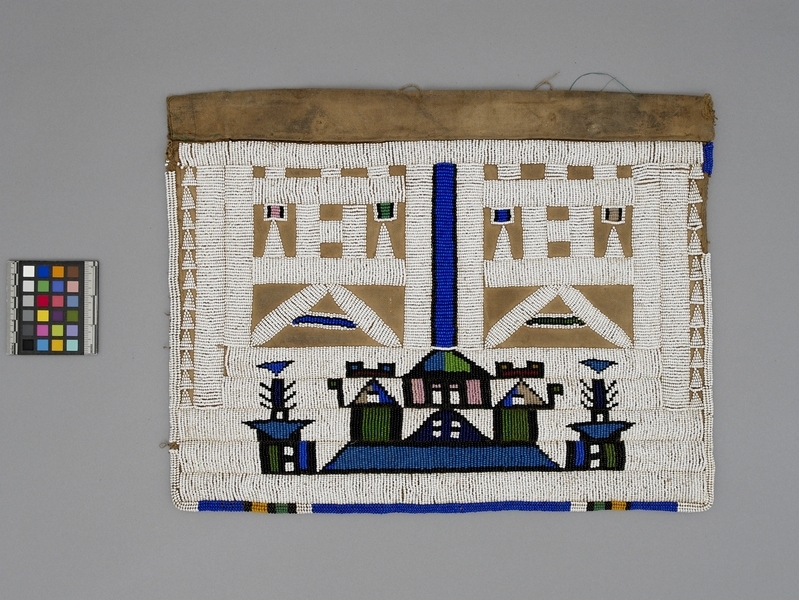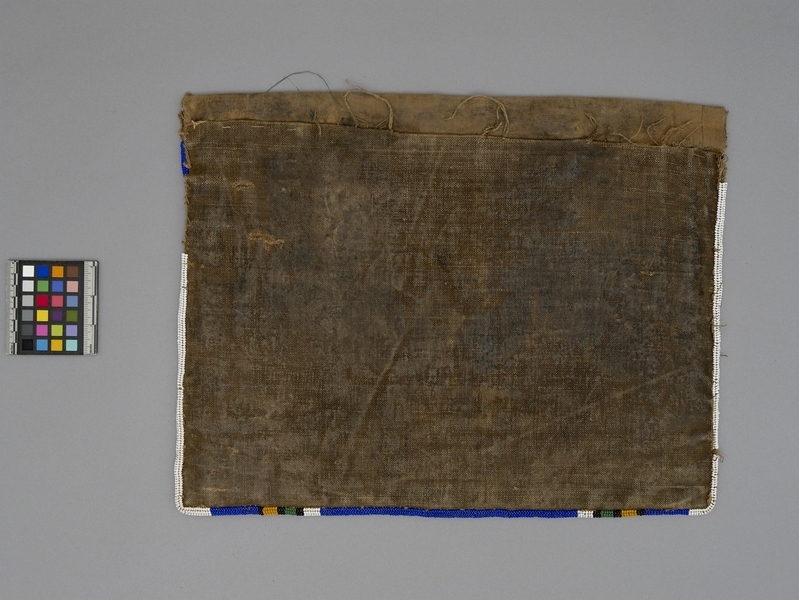Apron Item Number: 2790/6 from the MOA: University of British Columbia


Description
Canvas apron with beadwork decoration in blue, white, pink, green, yellow and black. A backing of plain canvas, beaded to the front piece at the sides and with the top edge left open to insert a square of brown cardboard for stiffening support, has large stitches of brown and green thread across the top edge. Canvas is rolled and stitched at the top edge to create a waist band.
History Of Use
Unmarried, initiated girl’s apron, called isiphephetu, typically with a pattern that represents architecture. According to Powell, in 'Ndebele: a People and Their Art', it is a 'stiff rectangular apron worn by young girls after they have completed the period of seclusion which constitutes female initiation. "In contrast with the ligabi, the isiphephetu’s beading is usually more than merely geometric in its design, and it is here for the first time that the symbolism of the house is essayed in the bead cycle. Often the iphephetu is also the site for more fanciful flights of imagination in Ndebele beading, and such motifs as electric lights, chimneys and telephone poles are often in evidence. There is a good reason for this : the isiphephetu is made by the wearer’s mother while the girl is in initiatory seclusion, and it serves to express the mother’s aspirations for her daughter. In the older context, these translate themselves into a range of domestic symbolism, mainly in the form of house motifs, but as the bonds of traditional appropriateness have loosened, such motifs as the aeroplane, which in the Ndebele language is known as a ‘Ufly’, have become increasingly common…" The isphephetu is usually worn with a backskirt, known as an isithimba.
Item History
- Made in South Africa
- Owned by Lawrence Feuchtwanger before March 3, 2010
- Received from Lawrence Feuchtwanger (Donor) on March 3, 2010
What
- Name
- Apron
- Identification Number
- 2790/6
- Type of Item
- apron
- Material
- paper, cotton fibre and glass ?
- Overall
- height 37.0 cm, width 48.0 cm, depth 1.5 cm
Who
- Culture
- Ndebele
- Previous Owner
- Lawrence Feuchtwanger
- Received from
- Lawrence Feuchtwanger (Donor)
Where
- Holding Institution
- MOA: University of British Columbia
- Made in
- South Africa
When
- Ownership Date
- before March 3, 2010
- Acquisition Date
- on March 3, 2010
Other
- Item Classes
- beadwork; textiles
- Condition
- good
- Accession Number
- 2790/0006